A well-designed walkway does more than connect different areas of your backyard, it truly sets the tone for your entire outdoor space. Whether you are working with a small garden or a large lawn, these 10 creative ideas will help you transform your backyard with style, charm, and function. Best of all, many of the materials are easy to find on Amazon, and I’ve included links to make your project even easier to start.
- Stepping Stones Through Grass
A stepping stone path through lush grass creates a relaxed, whimsical feel — perfect for gardens or leading to a hidden bench. To install, start by laying out your path with a rope or garden hose to test spacing. Dig a shallow hole for each stone so it sits level with the grass, and press it firmly into place. Leave space between the stones for a natural walking rhythm. To add even more charm, fill the gaps with creeping thyme seeds, which give off a lovely scent when walked on. For the stones themselves, you can use natural slate stepping stones to achieve a timeless look.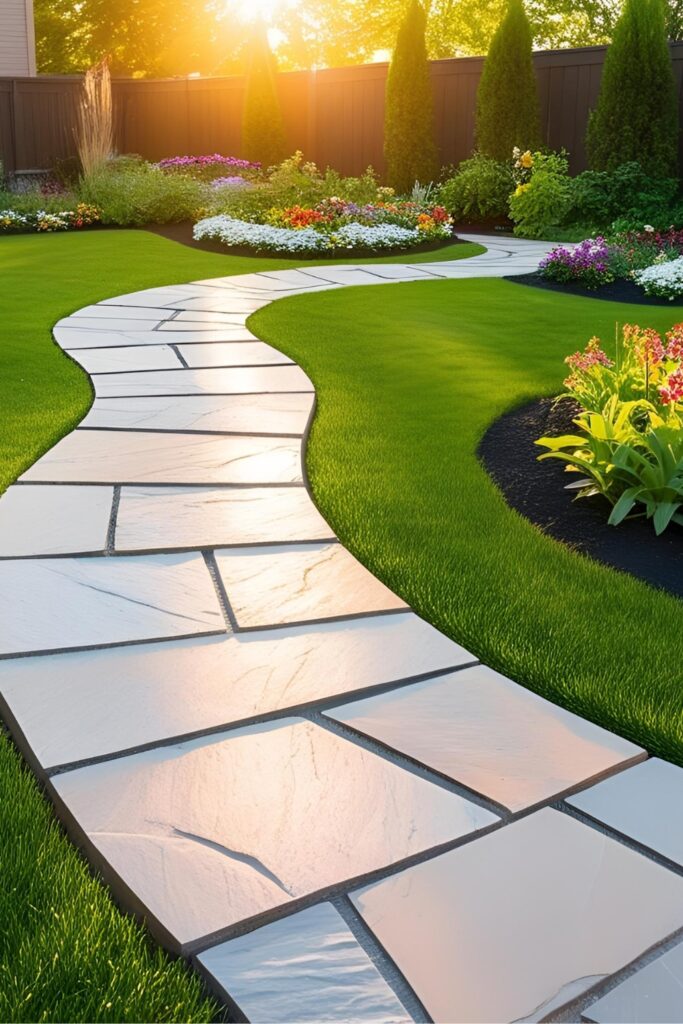
- Gravel Paths with Edging
Gravel walkways are one of the easiest and most cost-effective ways to create a clean, defined path in your backyard. Start by outlining your path and digging out a few inches of soil. Add a layer of landscape fabric to prevent weeds, then frame the edges with a metal landscape edging kit for a tidy finish. Finally, fill the path with pea gravel and rake it smooth. It’s a classic look that works for both formal and informal spaces and requires very little upkeep.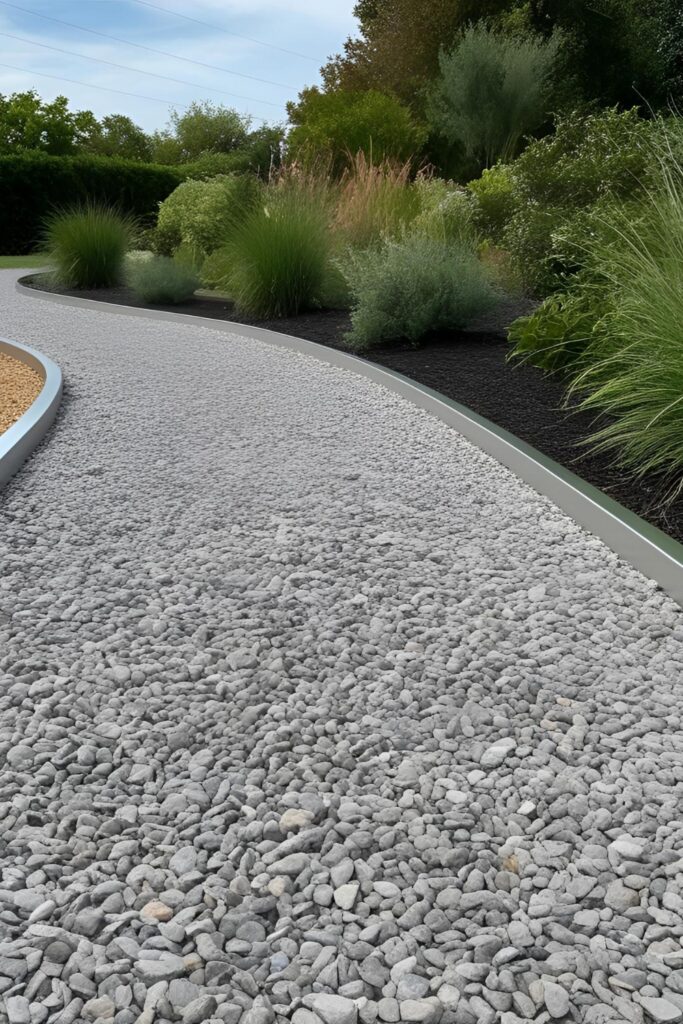
- Flagstone Walkways
Flagstone paths offer an organic, natural look that pairs beautifully with flower beds and wooded yards. Begin by arranging your stones in a loose, puzzle-like layout, leaving some space between them. Dig each stone into the soil or set it in a sand base, ensuring it lies flat and level. Finish by sweeping jointing sand or small gravel into the spaces to hold the stones in place. If you’d like a budget-friendly approach, consider using a flagstone mold to create your own DIY stones from concrete.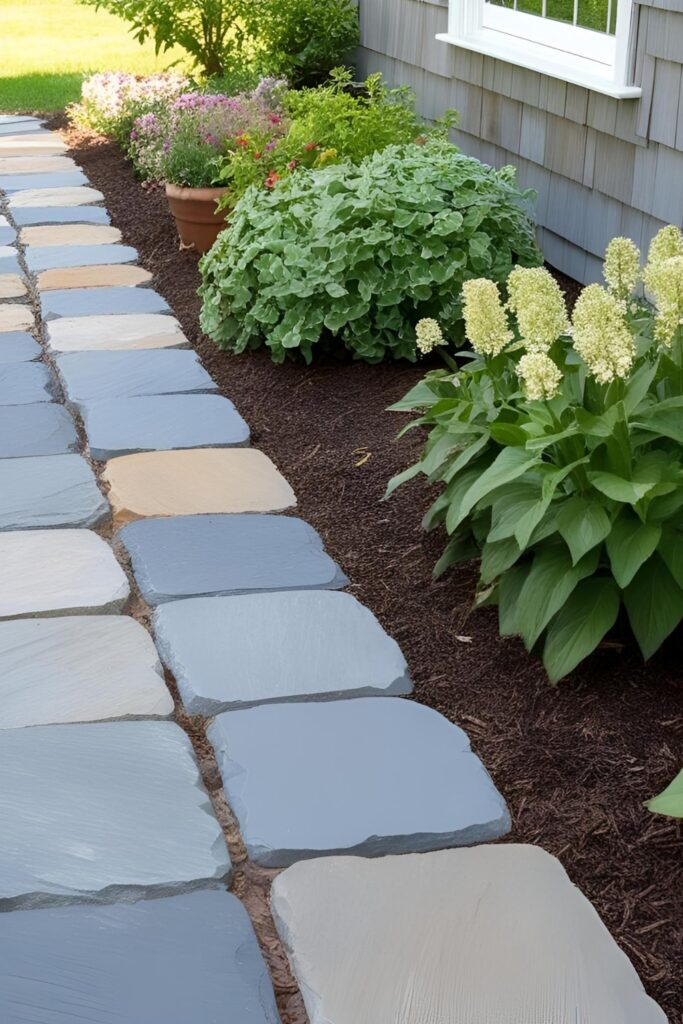
- Brick Garden Paths
Brick walkways bring a timeless charm to any outdoor space, especially when laid in patterns like herringbone or basket weave. Start by excavating the path area and adding a compacted gravel base followed by a thin layer of sand. Lay the bricks snugly in your chosen pattern, tapping them down with a rubber mallet. Once in place, sweep sand over the top to fill in the gaps. For a warm, rustic look, reclaimed-style brick pavers are ideal. Adding a weed barrier fabric underneath helps prevent future maintenance issues.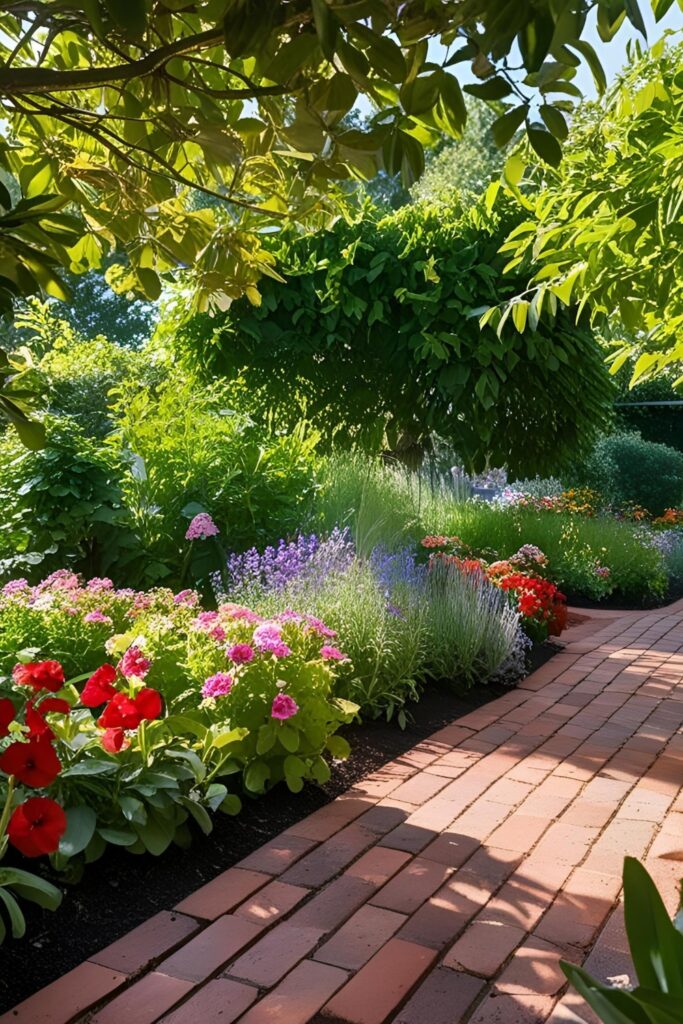
- Wood Slice Walkways
Wood slice walkways are perfect for shaded, woodland-inspired gardens and bring a rustic, handcrafted vibe. To create this path, use thick wood slices, each about 2–3 inches tall, and treat them with an outdoor wood sealer to resist moisture. Dig shallow holes and nestle each slice into the soil, or set them in gravel for better drainage. Fill the gaps with mulch or bark chips for a natural finish that blends beautifully with the surrounding greenery.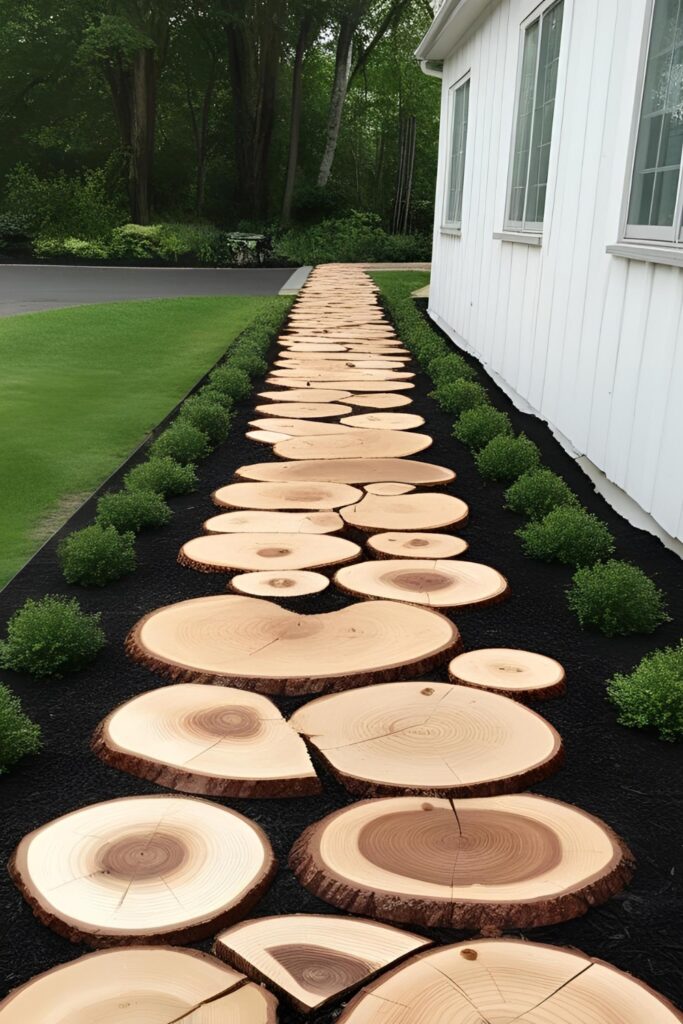
- Concrete Paver Paths
For a clean and modern look, concrete paver paths are a go-to. Use square concrete stepping stones spaced evenly across your path. Prepare a compacted base of gravel and sand, then place each paver with consistent spacing. In between, you can add black gravel, mulch, or even low-growing grass. This minimalist design works well for contemporary backyards and pairs beautifully with outdoor lighting and streamlined landscaping.
- Mulch Paths
Mulch paths are easy to install and blend seamlessly into flower beds or vegetable gardens. Start by outlining the walkway and removing any grass or weeds. Lay down landscape fabric to suppress future growth, then spread a generous layer of cedar mulch. Finish the edges with simple garden border edging to prevent the mulch from spilling out. This option is both kid- and pet-friendly and naturally decomposes over time, improving the soil.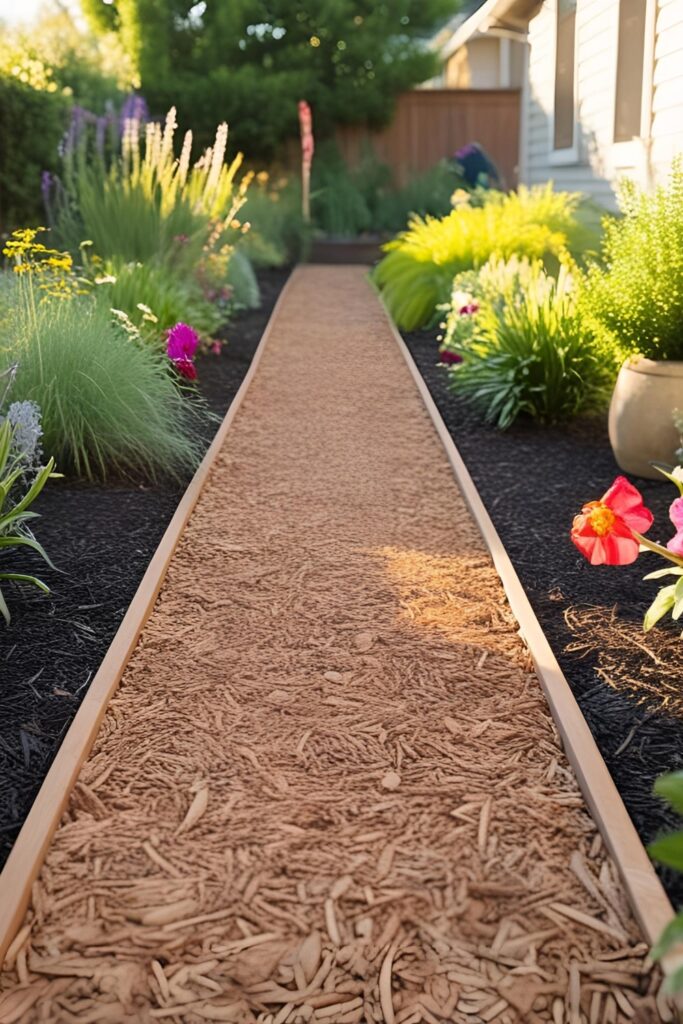
- Stone and Moss Walkways
If your yard has shady, damp areas, a mossy stone path adds instant enchantment. Lay flat river stones naturally through the area, then tuck pieces of live moss in the spaces between. Keep it misted until the moss takes root. This walkway is best suited for lower-traffic areas since moss is delicate, but the dreamy, forest-like effect is well worth the effort.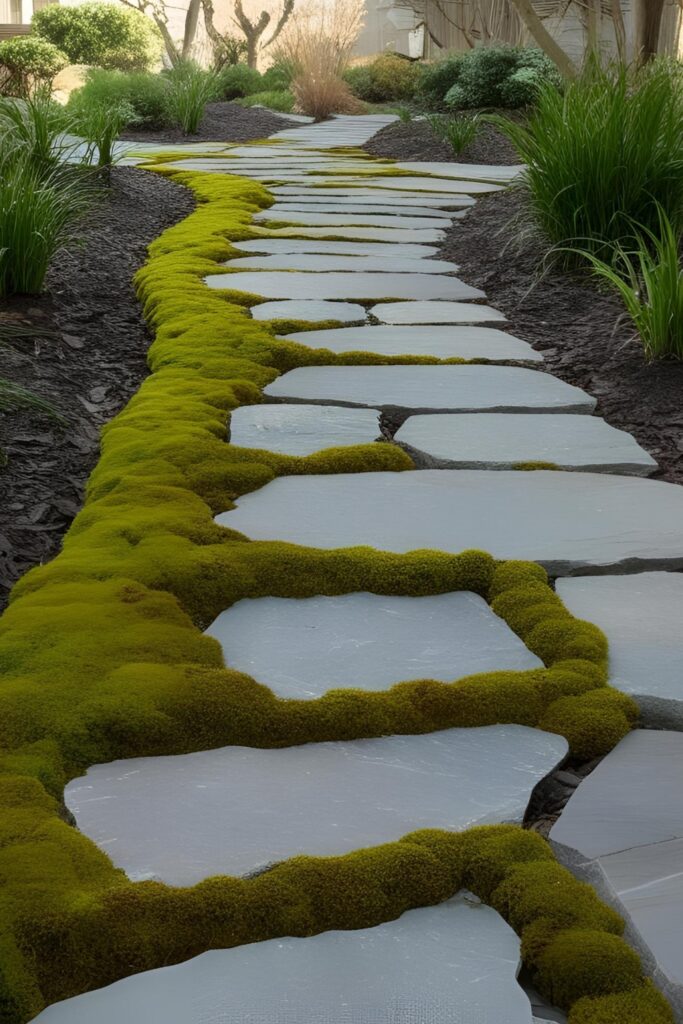
- Stamped Concrete
Stamped concrete is ideal if you want the look of stone or tile but need a more durable and cost-effective solution. Begin by pouring a concrete slab and pressing stamped concrete mats into the surface before it fully cures. Once dry, apply a stain and sealant combo to enhance texture and color. This technique is great for patios, paths, or even driveways, and can mimic brick, cobblestone, or slate.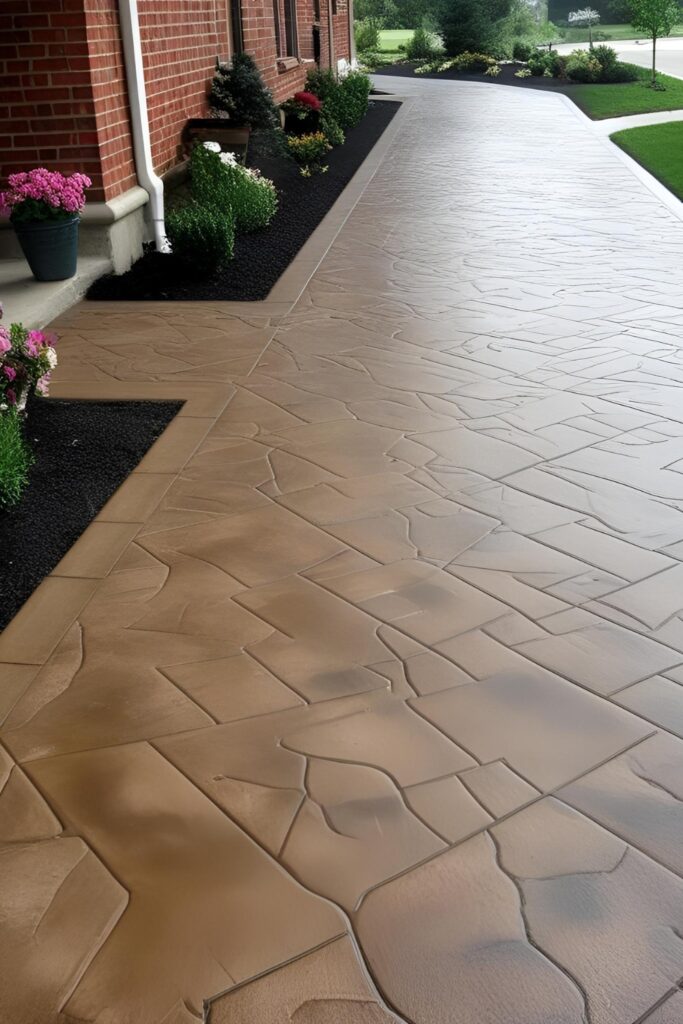
- Pebble Mosaic Walkways
If you’re feeling artistic, pebble mosaic walkways let you create true works of garden art. Start by sketching a design, then dig a shallow trench and pour in concrete. Arrange mixed mosaic pebbles into the wet surface, following your pattern. Once dry, apply a weather-resistant tile adhesive or sealant to keep the design intact. Use this technique in small areas — like an entry path or garden center — for a striking focal point.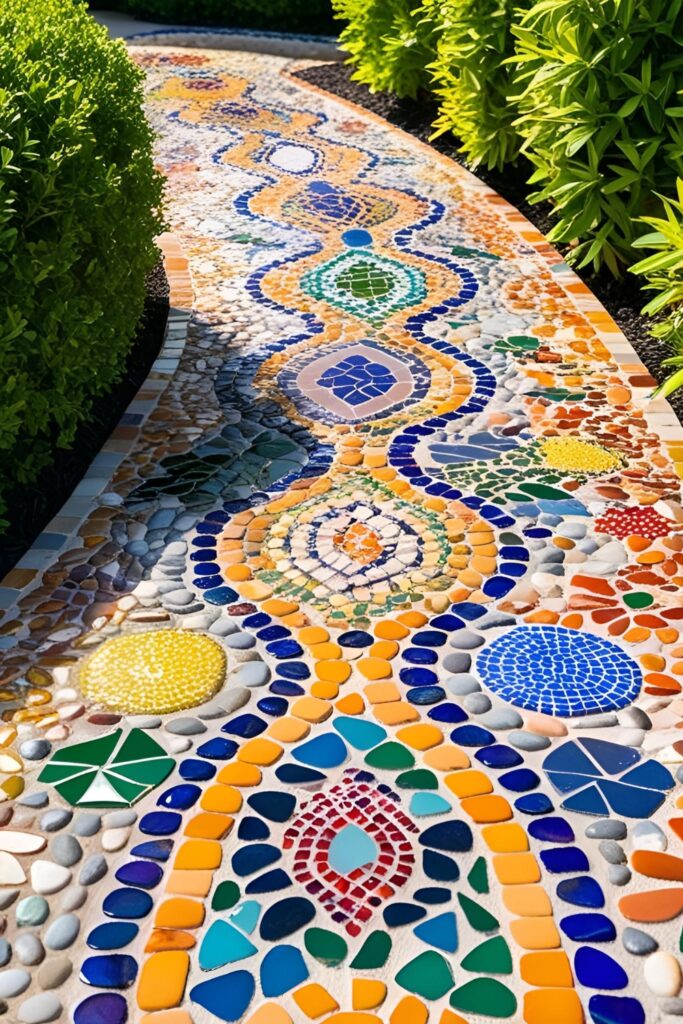
Final Thoughts
Whether you want something rustic and whimsical or sleek and modern, there’s a walkway design to fit your backyard’s personality — and your budget. With a few tools and a bit of creativity, you can create a stunning path that brings structure, flow, and charm to your outdoor space. And with so many great materials available online, you’re only a few clicks away from getting started.
This post contains affiliate links, which means I may earn a small commission (at no extra cost to you) if you make a purchase. Thank you for supporting this blog and helping me continue to share simple, timeless ideas for your home.
Leave a Reply